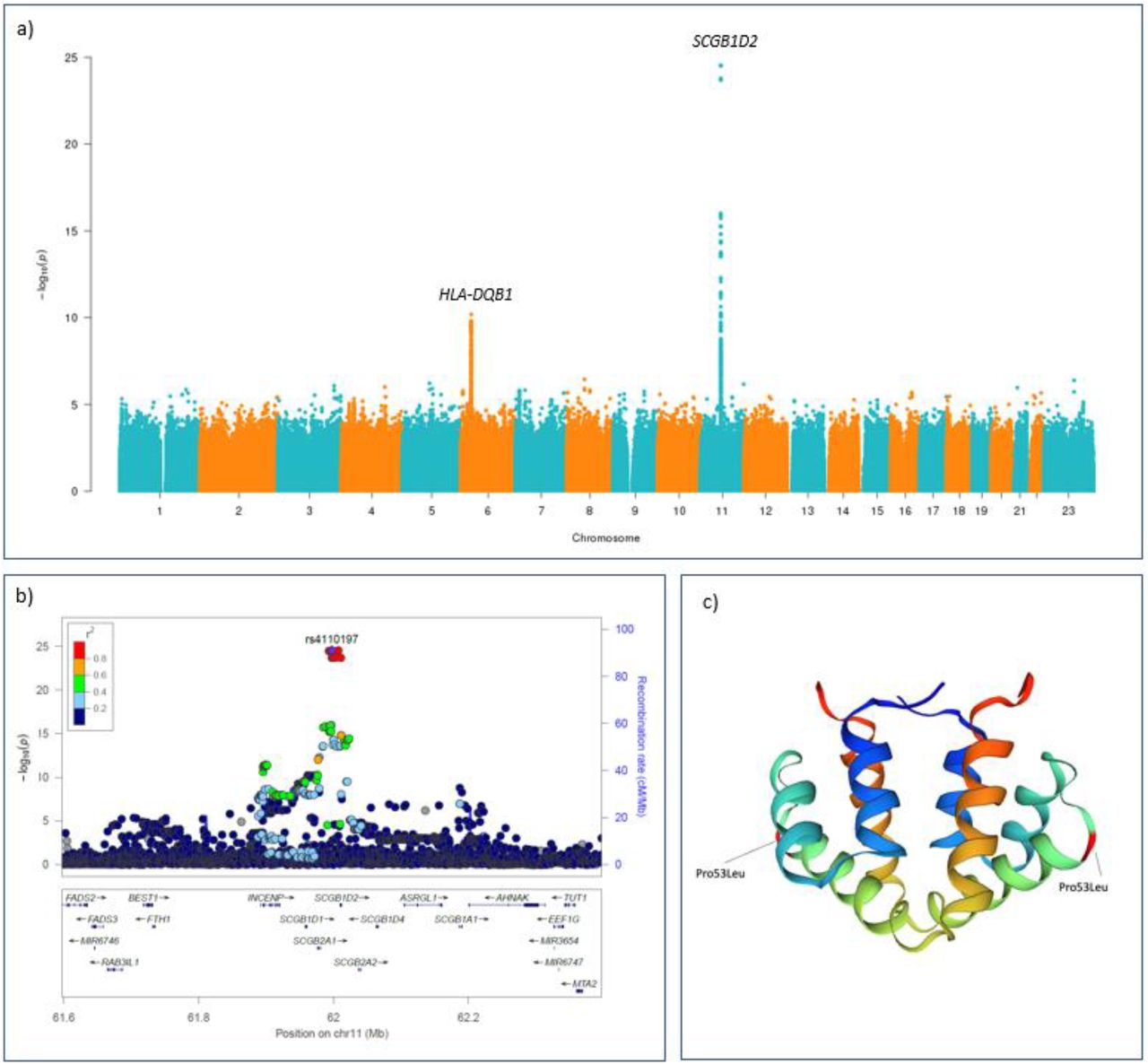Abstract
Lyme disease is a tick-borne disease caused by bacteria of the genus Borrelia. The disease can initially manifest as an erythema migrans rash and, if able to evade the host immune defenses, can progress into a secondary stage chronic disease with debilitating physical or neurological manifestations1,2. The host factors that modulate susceptibility for Lyme disease have remained mostly unknown. Here we show a novel host defense mechanism against Lyme disease in humans. Using epidemiological and genetic data from FinnGen, we identify a common missense variant at the gene encoding for Secretoglobin family 1D member 2 (SCGB1D2) protein that increases the susceptibility for Lyme disease. The genetic variant changes proline at position 53 to leucine and is predicted as deleterious. Consequently, we validate the dysfunction of this protein variant using live Borrelia burgdorferi (Bb). Recombinant reference SCGB1D2 protein inhibits the growth of Bb twice as effectively as the recombinant SCGB1D2 P53L deleterious missense variant. Together, these data suggest that SCGB1D2 is a host defense factor present in the skin, sweat, and other secretions which protects against Bb infection. This finding provides a novel therapeutic avenue for drug development to prevent and treat Lyme disease.
Preprint
https://www.biorxiv.org/content/10.1101/2022.05.27.493784v2.full
Lyme disease is a tick-borne disease caused by bacteria of the genus Borrelia. The disease can initially manifest as an erythema migrans rash and, if able to evade the host immune defenses, can progress into a secondary stage chronic disease with debilitating physical or neurological manifestations1,2. The host factors that modulate susceptibility for Lyme disease have remained mostly unknown. Here we show a novel host defense mechanism against Lyme disease in humans. Using epidemiological and genetic data from FinnGen, we identify a common missense variant at the gene encoding for Secretoglobin family 1D member 2 (SCGB1D2) protein that increases the susceptibility for Lyme disease. The genetic variant changes proline at position 53 to leucine and is predicted as deleterious. Consequently, we validate the dysfunction of this protein variant using live Borrelia burgdorferi (Bb). Recombinant reference SCGB1D2 protein inhibits the growth of Bb twice as effectively as the recombinant SCGB1D2 P53L deleterious missense variant. Together, these data suggest that SCGB1D2 is a host defense factor present in the skin, sweat, and other secretions which protects against Bb infection. This finding provides a novel therapeutic avenue for drug development to prevent and treat Lyme disease.
Preprint
https://www.biorxiv.org/content/10.1101/2022.05.27.493784v2.full

